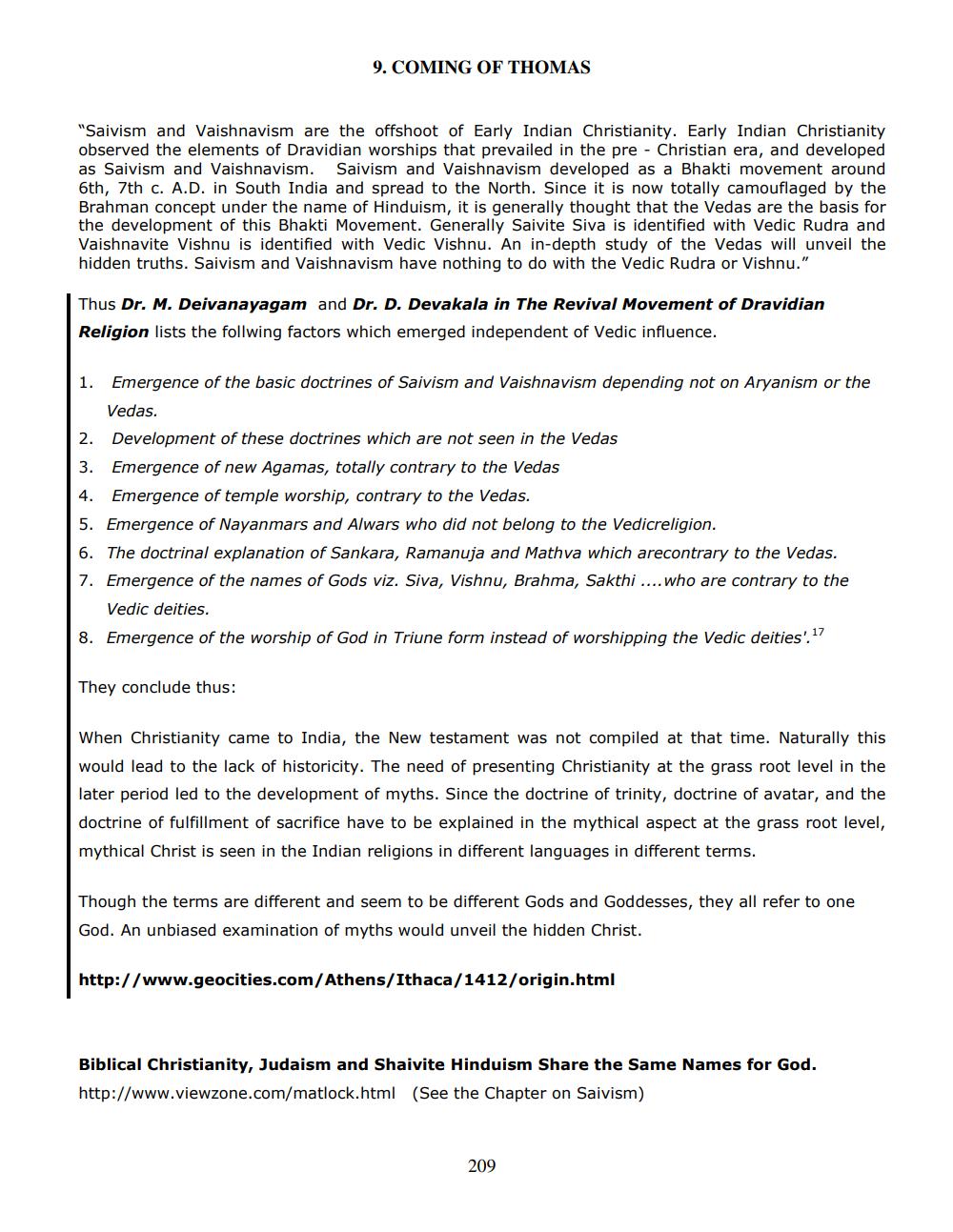________________
9. COMING OF THOMAS
"Saivism and Vaishnavism are the offshoot of Early Indian Christianity. Early Indian Christianity observed the elements of Dravidian worships that prevailed in the pre-Christian era, and developed as Saivism and Vaishnavism. Saivism and Vaishnavism developed as a Bhakti movement around 6th, 7th c. A.D. in South India and spread to the North. Since it is now totally camouflaged by the Brahman concept under the name of Hinduism, it is generally thought that the Vedas are the basis for the development of this Bhakti Movement. Generally Saivite Siva is identified with Vedic Rudra and Vaishnavite Vishnu is identified with Vedic Vishnu. An in-depth study of the Vedas will unveil the hidden truths. Saivism and Vaishnavism have nothing to do with the Vedic Rudra or Vishnu."
Thus Dr. M. Deivanayagam and Dr. D. Devakala in The Revival Movement of Dravidian Religion lists the follwing factors which emerged independent of Vedic influence.
1. Emergence of the basic doctrines of Saivism and Vaishnavism depending not on Aryanism or the
Vedas. 2. Development of these doctrines which are not seen in the Vedas 3. Emergence of new Agamas, totally contrary to the Vedas 4. Emergence of temple worship, contrary to the Vedas. 5. Emergence of Nayanmars and Alwars who did not belong to the Vedicreligion. 6. The doctrinal explanation of Sankara, Ramanuja and Mathva which arecontrary to the Vedas. 7. Emergence of the names of Gods viz. Siva, Vishnu, Brahma, Sakthi ....who are contrary to the
Vedic deities. 8. Emergence of the worship of God in Triune form instead of worshipping the Vedic deities'.
They conclude thus:
When Christianity came to India, the New testament was not compiled at that time. Naturally this would lead to the lack of historicity. The need of presenting Christianity at the grass root level in the later period led to the development of myths. Since the doctrine of trinity, doctrine of avatar, and the doctrine of fulfillment of sacrifice have to be explained in the mythical aspect at the grass root level, mythical Christ is seen in the Indian religions in different languages in different terms.
Though the terms are different and seem to be different Gods and Goddesses, they all refer to one God. An unbiased examination of myths would unveil the hidden Christ.
http://www.geocities.com/Athens/Ithaca/1412/origin.html
Biblical Christianity, Judaism and Shaivite Hinduism Share the Same Names for God. http://www.viewzone.com/matlock.html (See the Chapter on Saivism)
209




